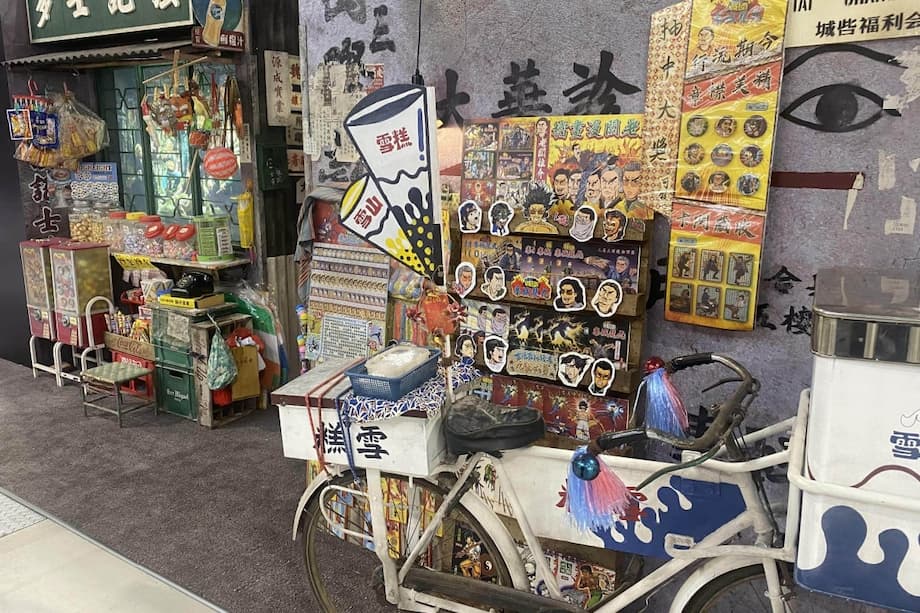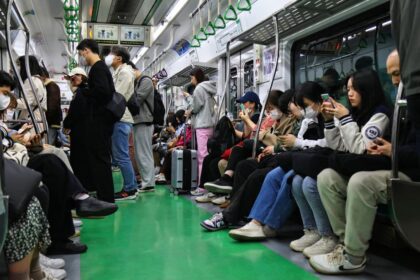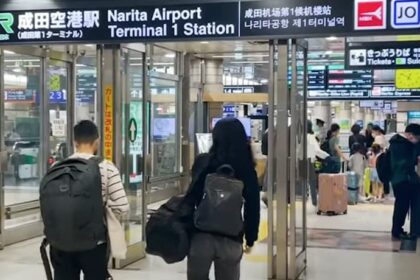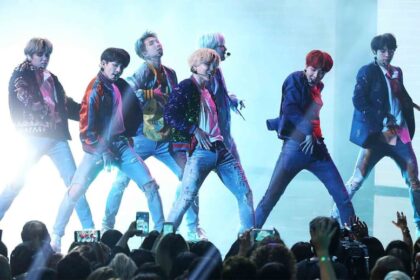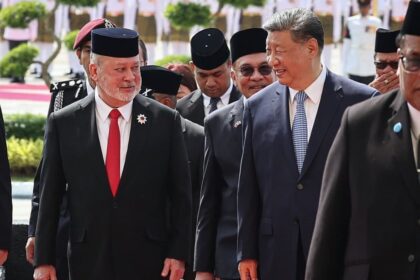A brisk rebound amid headwinds
Japanese visitors are returning to Hong Kong in larger numbers in 2025, offering a lift to a market that has faced long pandemic aftershocks and an unfavorable currency backdrop. Between January and July, 395,375 travelers from Japan arrived in Hong Kong, up 32.2 percent from the same period in 2024. The momentum signals renewed interest in a destination that blends neon nights, tight alleyways, and a dense food scene with sleek galleries and skyline views. The revival has not restored pre-pandemic strength yet, since arrivals remain more than 46 percent below 2018, but the trend is encouraging for a city eager to reconnect with one of its most loyal source markets.
- A brisk rebound amid headwinds
- What is fueling interest: nostalgia, kawaii and city magic
- The numbers behind the rebound
- Obstacles that still weigh on the Japan market
- How Hong Kong is marketing in Japan in 2025
- A two way tourism relationship, and why Hong Kong visitors to Japan dipped
- What Japanese visitors want from a Hong Kong trip right now
- Planning tips for Japanese travelers
- The Bottom Line
Tourism planners in both places see the same forces from different sides of the ledger. A weak yen has helped make Japan a bargain for inbound visitors, yet it has made overseas travel more expensive for Japanese households. That has pushed many people to favor domestic trips, while some have taken longer to renew passports that expired during border closures. Hong Kong’s pitch is that it is close, familiar, and rich in experiences, and that flights are more affordable than longer routes to Europe or North America. The approach, paired with pop culture tie-ups that spotlight kawaii aesthetics and a wave of nostalgic imagery, is drawing fresh attention.
Campaigns now play heavily on a mix of new and old Hong Kong. The city’s promotion in Japan leans into a visual contrast, setting hyper modern city scenes against weathered shopfronts and cinematic alleyways. It also borrows from the language of kawaii culture, using characters and playful installations that resonate with Japanese audiences. Cute, collectible, and photogenic, these cues are helping tourism marketers reframe Hong Kong as a place to feel as well as see, where ramen-toned food hunts and toy-store treasure trails run alongside classic harbor views.
What is fueling interest: nostalgia, kawaii and city magic
Two themes stand out in the current revival, nostalgia and kawaii. In Japan, Hong Kong’s booth at major travel fairs has leaned into the city’s cinematic past while celebrating its sleek present. The result is a destination identity that is both gritty and polished, something that feels familiar to anyone raised on action films set in backstreets and markets, and fresh to younger travelers who find joy in character art, collectible culture, and curated photo spots.
A Kowloon Walled City moment
At Tourism EXPO Japan 2025 in Aichi, the Hong Kong Tourism Board unveiled a booth built around a film set from the recent hit movie Twilight of the Warriors: Walled In. Visitors can step into a recreation of the Kowloon Walled City as it might have looked in the 1980s, complete with tiny eateries, a candy shop, and a barbershop. The installation taps a powerful vein of nostalgia. The Walled City is long gone, replaced by a park, yet its legendary density and layered life still fascinate audiences in Japan. The set offers a tangible way to pose, play, and imagine, which is exactly what social media travelers seek.
Pop culture activations in Hong Kong
Back in Hong Kong, kawaii content has become a crowd magnet. The city staged a summer takeover by Chiikawa, the Japanese manga trio whose wide-eyed charm has swept Asia. Chiikawa Days drew more than 100,000 visitors and helped the host mall achieve a record month for footfall since its 2019 opening. Installations popped up across tram lines, ferry piers, and malls, while brands rolled out themed menus and limited collectibles. Locally beloved characters like Labubu joined the visual parade, and panda imagery remained a reliable draw. These activations influence both residents and visitors. For Japanese travelers deciding where to spend on a short break, a city pulsing with friendly characters and camera-ready scenes is more tempting than a quiet shopping trip alone.
The numbers behind the rebound
The 32.2 percent rise in Japanese arrivals to Hong Kong through July is meaningful, given the headwinds. Before the pandemic, annual Japanese arrivals surpassed one million. That context explains why 2025 still looks subdued against 2018, even with a solid jump from 2024. The recovery is not linear either. Exchange rates, flight capacity, and shifting habits in Japan continue to affect how quickly the market can rebuild.
Currency is central to the story. When the yen weakens, Japan becomes cheaper for inbound travelers, and overseas trips become pricier for Japanese. That gap has widened in the past two years. Many potential visitors are evaluating value in more granular ways, from airfare and hotel rates to food budgets and shopping plans. Hong Kong’s pitch is that it delivers a rich trip in fewer days, with shorter flights, efficient transit, and deep variety across price points. That math helps the city compete with Seoul, Taipei, and Bangkok for weekenders and long weekends.
Japan’s inbound boom frames the challenge. According to the Japan National Tourism Organization (JNTO), visitor totals set record highs across much of 2025, with more than 21.5 million arrivals in the first half alone and spending also at a record for that period. In short, Japan is drawing vast demand, while Japanese residents weighing overseas travel face higher price tags. Hong Kong’s strategy, keep the trip short, high impact, and easy to book.
Obstacles that still weigh on the Japan market
Habits changed during the pandemic. Many Japanese residents shifted to domestic trips and have kept that rhythm, finding value and comfort in local onsen towns, food regions, and theme parks. Tourism officials in Tokyo acknowledge that a share of the population has not renewed expired passports. Outbound trips require a bigger push when the price of a meal abroad feels higher in yen, and when a good domestic option is always available.
Safety and convenience also matter. Japanese travelers are meticulous planners, and they respond to clear itineraries, language support, and trusted transport options. Hong Kong’s advantages include a simple airport-to-city journey, plentiful signage in English and Chinese, and compact neighborhoods that pack museums, markets, and dining into walkable clusters. To attract cautious buyers, promotions need to be visible and timed to the moments when people start browsing for their next break.
That is why the message has emphasized proximity and familiarity. A two or three night stay in Hong Kong can fit into a busy schedule, while the city feels both foreign and comfortably navigable. Add in special flight offers, character-led events, and seasonal food fairs, and the value proposition is easier to see in yen terms.
How Hong Kong is marketing in Japan in 2025
Hong Kong took a bold approach at Tourism EXPO Japan 2025 in Aichi, contrasting the city’s glass towers with the textures of its street life. The Walled City film set, with photo spots and retro storefronts, became a centerpiece, while video walls pushed out harbor panoramas and festival footage. Visitors praised the booth for its eye catching look. The aim was to plant a lasting memory that could translate into a booking when travelers sit down to choose between regional city breaks.
Beyond visuals, the pitch focused on experiences. Marketers highlighted neighborhood food walks, night markets, art institutions like M+ and the Hong Kong Palace Museum, and easy day trips for hiking or island ferries. The message landed at a useful time, with airlines continuing to add capacity between Tokyo, Osaka, Nagoya, Fukuoka, and Hong Kong. Trade days at the fair set the stage for airline and tour partnerships, while public days let potential visitors see, touch, and photograph a slice of the city before they fly.
A two way tourism relationship, and why Hong Kong visitors to Japan dipped
The travel flow goes both ways, and developments in Japan help explain the broader context. JNTO data shows Japan hit record visitor totals in the first half of 2025 and set a record for July arrivals as well. Yet visitors from Hong Kong to Japan dropped for several months in the middle of the year. Airlines cited typhoon-related disruptions and a wave of viral rumors predicting a major earthquake in Japan. That chatter affected sentiment, a reminder of how quickly social media can shake travel intent even when the science does not support the fears.
Frankie Chow, who leads a Hong Kong travel agency, described how the rumor cycle hit demand earlier in the year.
The earthquake prophecy has absolutely caused a big change to our customers’ preferences.
He noted that inquiries fell sharply compared with the year before during the rumor peak, and that some clients chose different destinations or paused plans.
Officials in northern Japan worked to reassure travelers. Miyagi Governor Yoshihiro Murai urged visitors to keep perspective, pointing out that people in Japan were not fleeing.
There’s no reason to worry, but if unscientific rumours on social media are impacting tourism, that would be a major problem.
Japan’s central government addressed the claims directly. The Cabinet Office used its official channel to remind the public that precise earthquake predictions are not possible with current methods.
Predicting earthquakes by date, time and place is not possible based on current scientific knowledge.
Japanese tourism representatives also stepped up outreach in Hong Kong during the city’s major travel expo. The JNTO participated with materials in Cantonese and focused on direct engagement. Regional exhibitors spotlighted culinary trips, including Kyushu routes built around tourist trains that serve local dishes. A Fukuoka official said food is a prime reason people from Hong Kong choose Japan, a theme that remains a cornerstone of the pitch.
What Japanese visitors want from a Hong Kong trip right now
Value and variety top the list. Many travelers are building two or three night itineraries that link classic sights with compact, affordable experiences. That can look like a first evening on the Star Ferry and the Tsim Sha Tsui promenade for skyline views, a morning at M+ or PMQ, and an afternoon of street snacks and vintage shopping in Sham Shui Po or Mong Kok. Dinner might be dim sum or roasted meats one night and a ramen or izakaya counter the next, followed by a tram ride and a neighborhood dessert shop. The appeal is the density of options without long transfers or complicated booking.
Photo friendly and character-driven activities help. Pop-up displays, art trails, and limited collections give fans reasons to move through the city and share the experience online. Nostalgic locations, from tong lau walkups to neon signs and dai pai dong stalls, offer a sense of old Hong Kong that pairs well with curated new neighborhoods on the island’s west side. Travelers who want a breather can add an easy outing to Lamma Island or Dragon’s Back. The whole arc fits into a long weekend, which fits into tighter budgets.
Planning tips for Japanese travelers
A few practical steps can stretch budgets and reduce friction on the ground. The city is compact and straightforward to navigate, and most visitors find accommodation, dining, and transit easy to manage if they plan basics in advance. These tips reflect current conditions and common questions from Japanese visitors weighing a short hop to Hong Kong.
- Check airfares from multiple cities. Haneda, Narita, Kansai, Chubu, and Fukuoka all have direct services. Midweek departures often cost less.
- Consider two or three nights. Short stays are popular since the flight is about four to five hours from Tokyo, less from western Japan.
- Mind peak periods. Golden Week, major trade fairs, and long weekends fill hotels and attractions. If you prefer quieter streets, aim for shoulder weeks.
- Use the Airport Express and MTR. Trains are fast, frequent, and signed in English and Chinese. Taxis are widely available.
- Get an Octopus card or use contactless payment. Most shops and transit accept them, and it speeds up small purchases.
- Language is manageable. English is common in tourism settings. A few Cantonese phrases are appreciated.
- Budget for meals and shopping. Local eateries offer excellent value. International fine dining is available but costs more in yen terms.
- Free time for neighborhoods. Allow time to wander markets and side streets rather than overloading the schedule.
- Connectivity is simple. Pick up a prepaid SIM or an eSIM before arrival to navigate and translate on the go.
- Entry rules are friendly. Japanese passport holders can visit Hong Kong visa-free for up to 90 days (check for updates before travel).
The Bottom Line
- Japanese arrivals to Hong Kong rose 32.2 percent in January to July 2025, reaching 395,375.
- Visitor totals remain more than 46 percent below 2018, so the recovery is incomplete.
- Weak yen makes overseas trips costlier for Japanese travelers, favoring short regional breaks.
- Hong Kong is marketing nostalgia and kawaii, including a Kowloon Walled City film set at a major Japan expo.
- Japan set record inbound totals in 2025, while Hong Kong-to-Japan travel dipped midyear on rumor and weather concerns.
- Officials in Japan countered false earthquake claims, and tourism bodies increased outreach in Cantonese.
- Food, photo spots, and compact itineraries are shaping what Japanese visitors seek in Hong Kong.
- Airlines are adding capacity on Japan–Hong Kong routes, improving choices for short stays.


